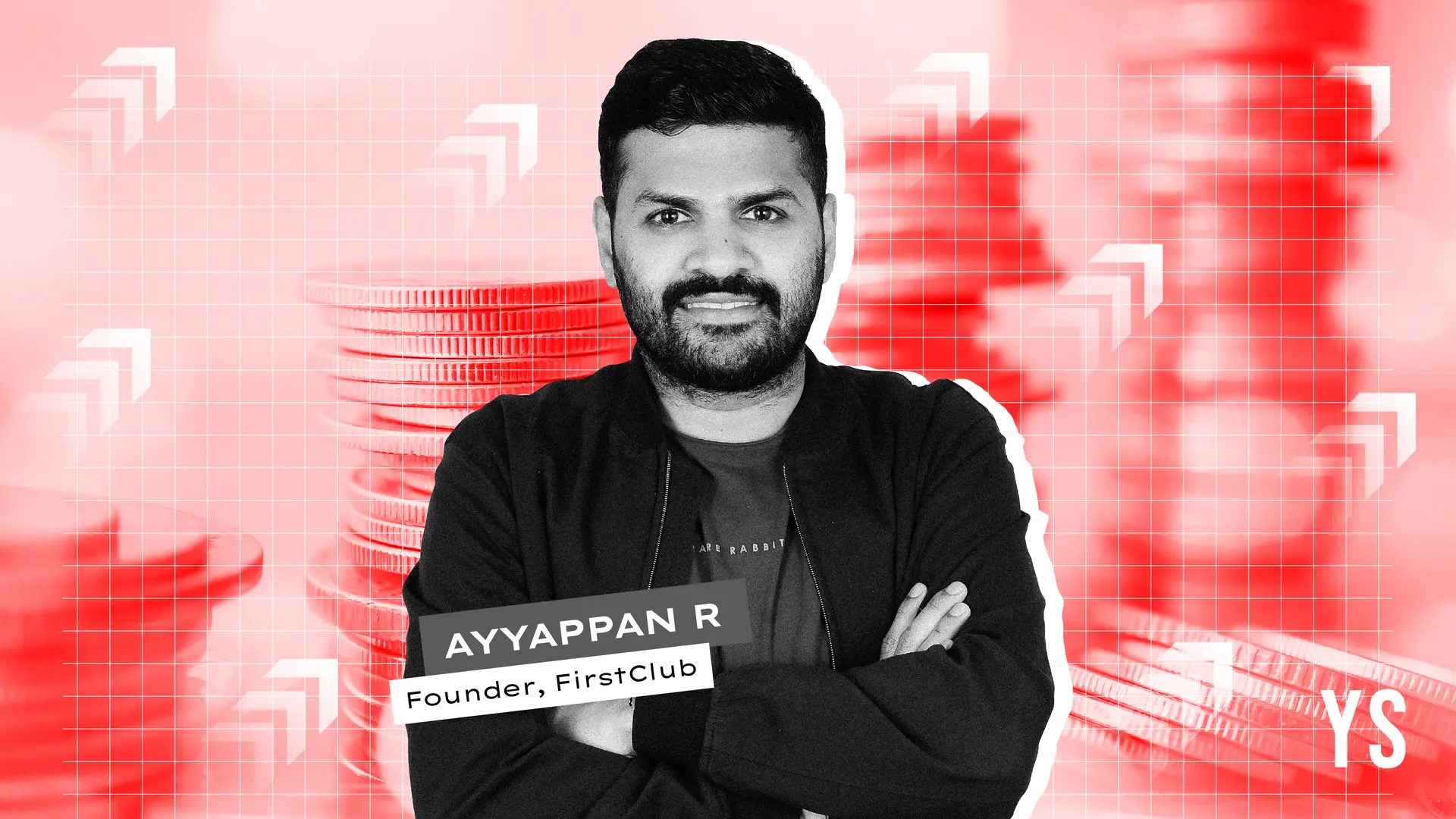Imagination, observation, dedication – what these artists teach us about the journey of creativity
In this photo essay, we share visual highlights from two art exhibitions at Karnataka Chitrakala Parishath, along with artist insights on purpose and practice.
Launched in 2014, PhotoSparks is a weekly feature from YourStory, with photographs that celebrate the spirit of creativity and innovation. In the earlier 410 posts, we featured an art festival, cartoon gallery. world music festival, telecom expo, millets fair, climate change expo, wildlife conference, startup festival, Diwali rangoli, and jazz festival.

Karnataka Chitrakala Parishath in Bengaluru recently hosted two exhibitions, titled Collage 2 Canvas (with the works of SM Veenaranjini, Adish Jain and Deboshree) and Colour and Space (featuring the works of Ramaiah University faculty members Chiranjith Barui, Sana Ashraf, Bala Vignesh, Lohit HS, Vijay N, Karthik G, Pratheek Achar, and Reemi Thakuria).
“Art for me is not only an expression of thoughts and feelings, but a way for the artist to give the world an idea of what aesthetics mean and feel like,” explains Chiranjit Barui, in a chat with YourStory.
The vast majority of his paintings feature motor vehicles, especially the classics. “I try to incorporate the little elements in the art piece that are not otherwise visible on the original structure. It's captivating to create how even motorcycles can bring out art on paper,” he adds.
He says he looks at a bike the same way people see the intricacies in a scripture, and has completed more than 500 paintings so far. His first motorcycle drawing was that of the Royal Enfield Electra, right after he rode back on it from Rameshwaram to Bengaluru in 2014.
“I have tried to restore the legacy of the legendary two-stroke motorcycles in my canvas. They have now almost vanished from the streets and have been replaced by the four-stroke ones,” Chiranjit explains.
Success for him comes from finding time for the passion of art, keeping the dedication alive, commercial gain, and viewer appreciation. “The critics actually drive you to strive more and better, of course,” he adds.
“I feel it is very important to appreciate every artist, as they all have their own unique styles and put in their time and effort together to create their artworks,” Chiranjit emphasises. Over the years, he has maintained consistency in his focus, along with improvement in style along the journey. His works are priced from Rs 3,000 to Rs 10,000.
“People need to stop bargaining about the price of the artwork as they usually do not have any idea about the time and dedication spent,” he recommends. At the same time, art interpretation is very subjective and one should not create rules as to how one must or must not look at art, he adds.
“There is no limit to achievement. Don't be bothered about whether the outcome is going to be fruitful. Just master the art of observing, and don’t ever give up,” Chiranjit advises aspiring artists. He also cites Picasso: “Learn the rules like a pro, so you can break them like an artist.”
“Art is a reflection of an artist’s deep sense of imagination,” explains Sana Ashraf, Faculty of Art and Design, Ramaiah University of Applied Sciences. Her painting style involves focusing in great detail on one particular element.
Inspiration for her comes from experiences of daily life activities, thoughts, and moods. For example, her painting ‘Shiva and Sati’ was inspired while she read the mythical story of Lord Shiva. “My emotions on both characters pushed me to paint abstracts of them,” Sana says.
On trends in Indian art today, she points to contemporary art, modernism, and naturalism. “Aesthetic value of art should be improved in society. India is resplendent with art and culture,” Sana says, calling for more platforms to promote art appreciation.
She turns to abstract art when she wants to convey emotions and impressions, and realistic art to express the beauty of nature and humans. Her art works are priced from Rs 10,000 to Rs 35,000. Sana’s next projects involve cultural arts and mythical art forms of Kerala.
Becoming an artist calls for patience, passion, creativity, and imagination, she advises aspiring artists. “To become an artist, a fine arts background is not a major factor,” she adds.
Artist Debo Shree says art means life fo her. “Art is a quest to find myself and communicate with myself. I can’t sleep without creating or practicing art for even a single day,” she insists. She reads, practices and experiments a lot to keep her style evolving.
“My artwork generally starts with a lot of disturbed and sleepless nights,” Debo says. A walk through the garden and nearby parks, lots of skygazing, staring at blank canvases, and listening to favourite songs help with the creative sparks, which can also arise while following daily routines. “I just 'let it go' and flow, and it is continuous,” she adds.
A creative addiction
Debo has completed three exhibitions, in Bengaluru, Goa and Mumbai. Her artworks are priced from Rs 25,000 to Rs 1 lakh. For the CKP exhibition, her artworks were themed on ahambrahmasmi (‘I am the universe’), showing the connectivity between humans and cosmos.
She notices that people have very mixed feelings about visual fine arts. “Most of them love art, in fact, they adore it. But it scares them to pursue, assess or invest in it,” Debo laments. They end up investing more on regular, safe, affordable, and easily available crafts.
“Art is a real stressbuster, a therapeutic experience, a creative addiction. It has been an integral part of people’s lives since the dawn of humanity, and is a symbol of economic progress and political expression as well. Its potential and possibilities are endless,” Debo enthuses.
She left the corporate world to pursue her love for art, and not just to be a successful artist. “Art is my way of connecting with myself. Success is a state of mind,” she explains. She calls for art appreciation to begin at home, with parental support for art as a profession for children and not just as a hobby.
“Art is more than an activity of leisure or luxury. It demands full attention and commitment, just like any other academic field. It is a continuous flow of profound knowledge and a way of life,” Debo explains. Art needs proper teaching institutes and gurukuls, much like Tagore’s vision of Santiniketan, where children can study their respective field of arts along with other academic subjects.
She has a string of favourite festivals: India Art Festival, Kala Ghoda Art Festival, Goa Art and Literature Festival, Nandan Mela, Calcutta Book Fair, Delhi International Book Fair, Jaipur Lit Fest, Chitra Santhe, Konark Dance Festival, Khajuraho Dance Festivals, and India Art Fair. “The list is never-ending, actually,” she jokes.
Debo advises audiences to develop their art appreciation practice by creating their own stories around the inputs, titles and paintings. “Interpretation of art cannot be done only by its creator. It’s totally for viewers to relate in their own way with the piece of art. That’s the beauty of it: look at it and feel it,” she recommends.
She offers tips for aspiring artists as well. “Practice, read, feel, listen and absorb. Your art is a part of you. Let it be you. Don’t make art just for commercial gain or pleasing the public,” she recommends.
“Paint for yourself. After all, it is you that matters,” Debo signs off.
Now, what have you done today to stop in your busy schedule, and find ways to unearth and pursue your deepest creative passions?















Chiranjith Barui, Sana Ashraf






Deboshree and SM Veenaranjini
Got a creative photograph to share? Email us at [email protected]!
See also the YourStory pocketbook ‘Proverbs and Quotes for Entrepreneurs: A World of Inspiration for Startups,’ accessible as apps for Apple and Android devices.








